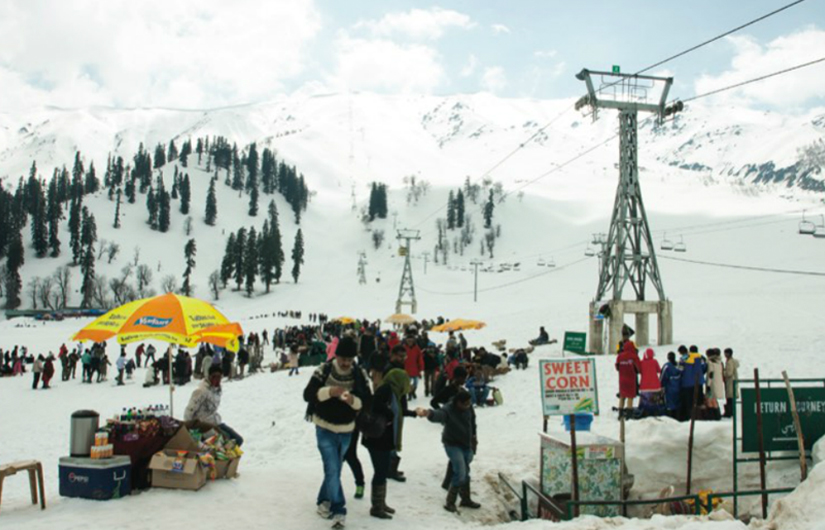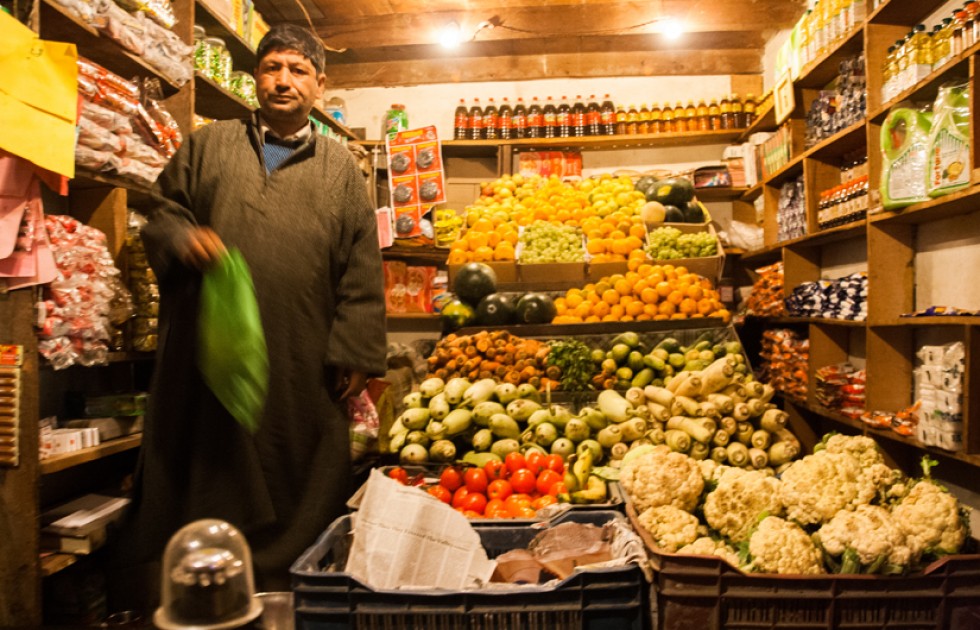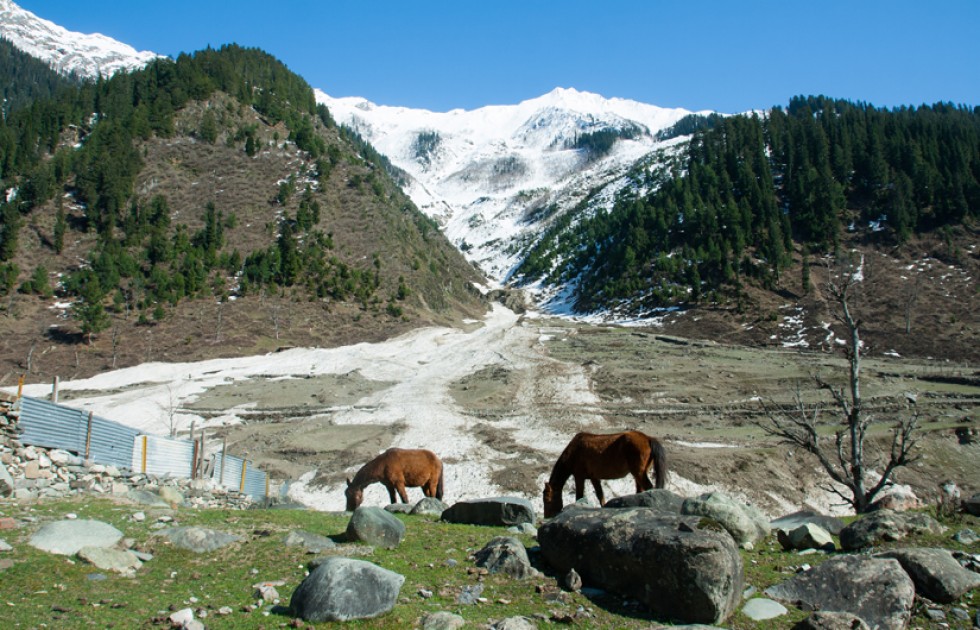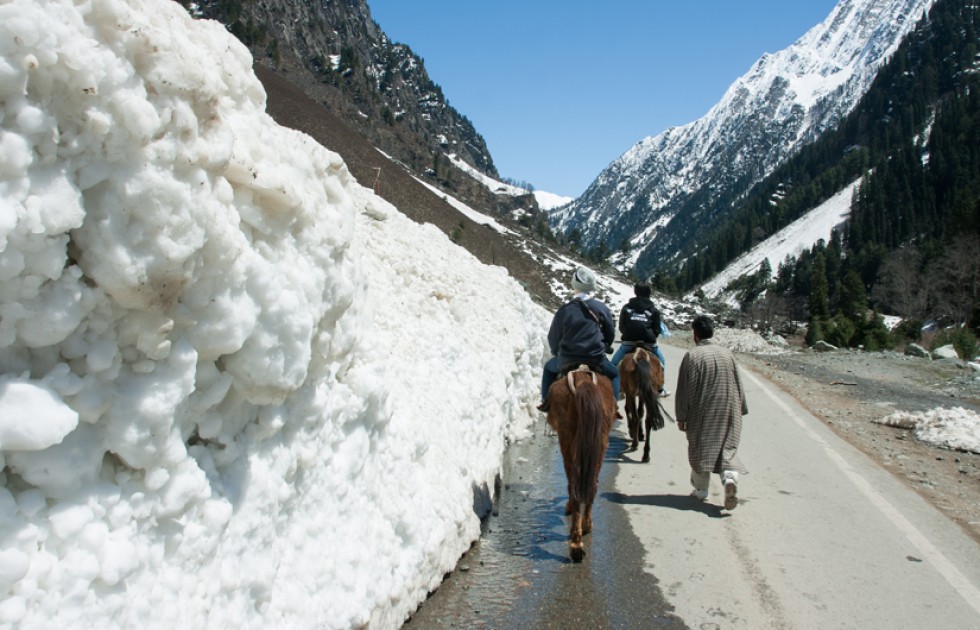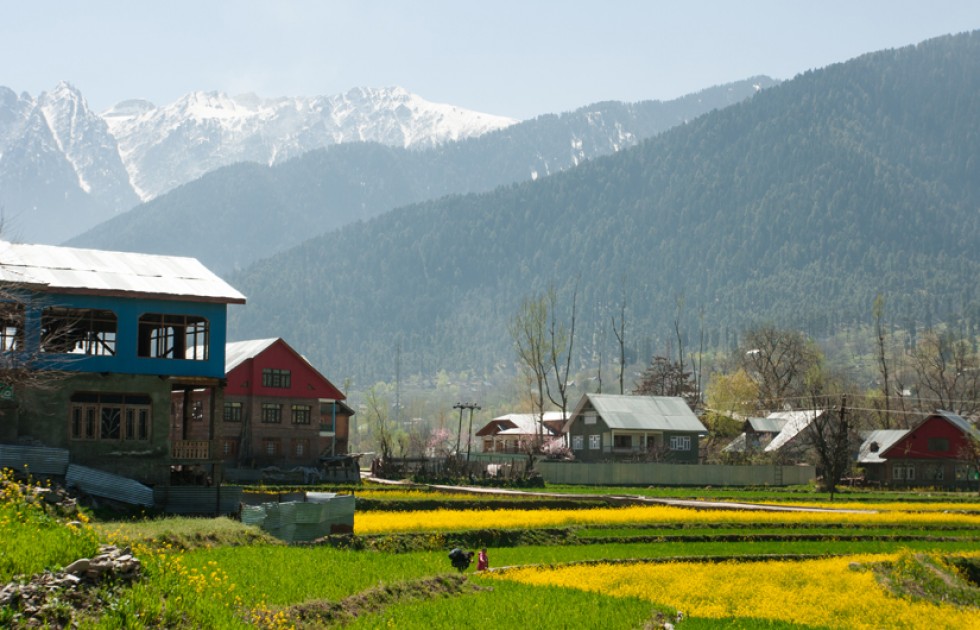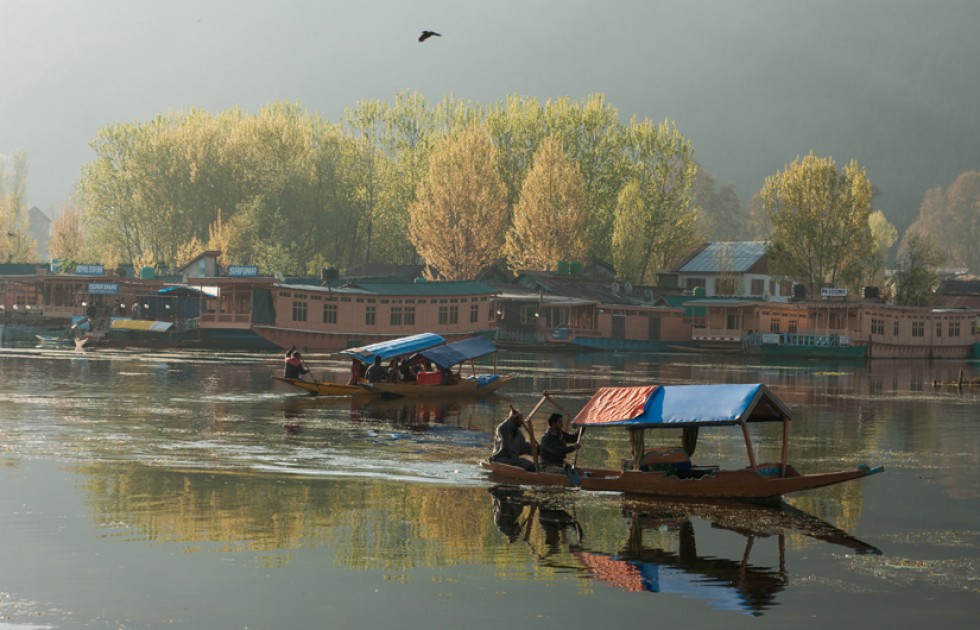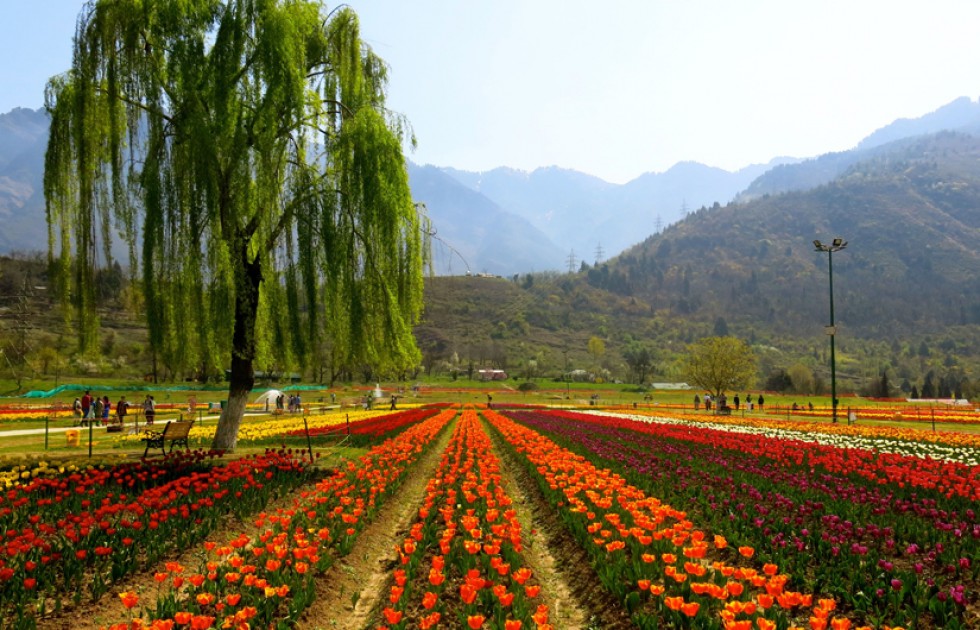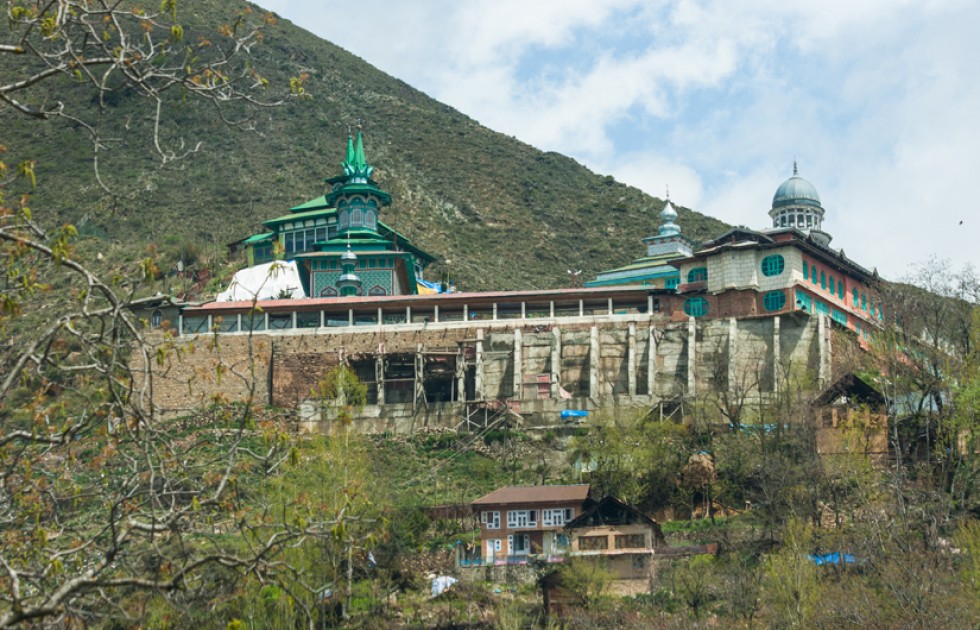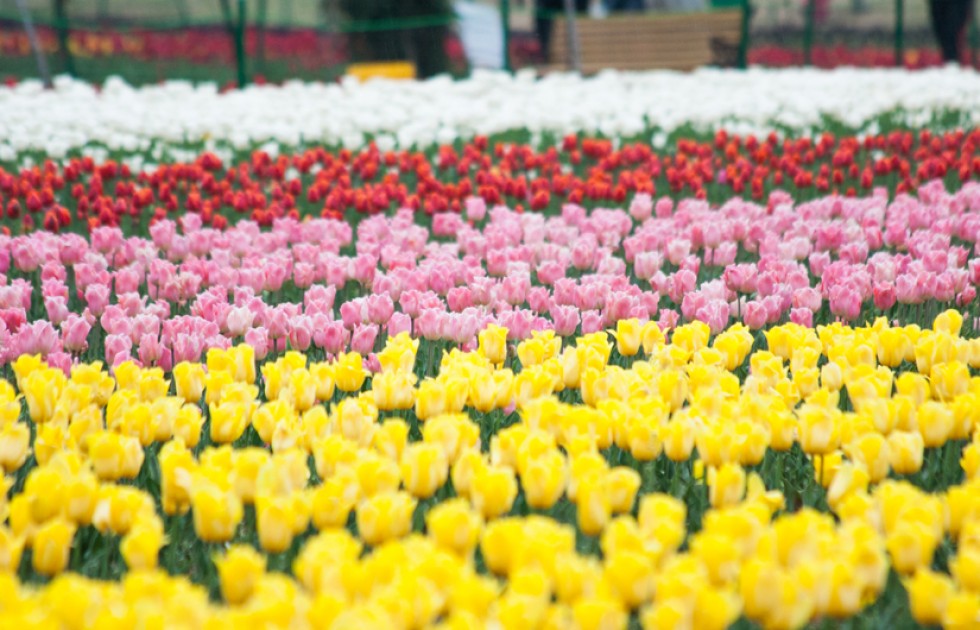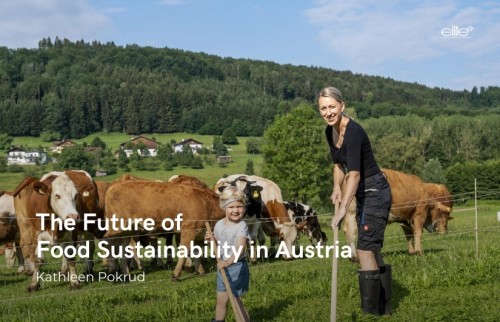KASHMIR DREAMING
This Himalayan valley of breathtaking natural and culturalbeauty remains underexplored by foreign tourists
Descriptions such as “Switzerland of the East” or “heaven on earth” do not stray too far from the truth. The Kashmir Valley in India’s northern corridor is a jewel of South Asia, but decades of political unrest have left the region’s natural and cultural beauty underexplored by foreign tourists. Alpineland scapes of cherry blossoms, saffron fields, sparkling rivers, peaceful lake sand wild flower meadows are also home to grand mosques ringing out the calls to prayer. In the summer, wanvun folk songs from lavish wedding parties echo through lush valleys surrounded by snow-capped peaks. Kashmiris are known for their smiles and genuine hospitality, and the region can be explored on ashoestring budget.
Kashmir at a glance
Usually referred to simply as Kashmir, the Kashmir Valley is part of the Indian state of Jammu and Kashmir, in turn part of the larger Kashmir regionthat includes Pakistan-administered Azad Kashmir and Gilgit–Baltistan, and China-administered Aksai Chin and the Trans-Karakoram Tract. Jammuand Kashmir state a malgamates the valley, Ladakh and Jammu. The peopleand cultures of Ladakh and Jammu, however, differ greatly from those ofthe valley.
Evidence indicates that the Kashmiri are descendants of Israelis, Iraniansand Arabians. They are predominantly Muslim (whereas Ladakhi are mainlyTibetan Buddhists and Jammu are Hindu) and speak Koshur, or Kashmiri –a mixture of Persian, Urdu and Arabic. The valley’s culture is a blend of northern South Asian, Central Asian and Persian influences. Besides therenowned handwoven carpets and pashmina shawls, the Kashmiri are also known for their dance and music. Wanvun (traditional folk songs), rouf (a row dance with bullet kicks performed by women) and Koshur Sufiana (devotionalsongs for Sufism) are part of everyday life.
Safe to visit?
Safety has long been a concern when planning a trip to Kashmir. Religious conflicts, territorial claims and the locals’ struggle for independence have sparked clashes in the area for over six decades. The situation has eased in recent years, however, with the latest major outbreak being the Kargil War in 1999. Travel in the valley is safe if you keep to the cities or go with a tour agency and avoid the border area with Pakistan, where violence flares up from time to time. Skirmishes between Indian soldiers and civilians are not uncommon, but the governmentand locals are sensitive about touristsafety and visitors will be warned against entering any dangerous areas.
Must-sees and dos
The history of political unrest and geographic isolation mean the valleysees fewer visitors and the natural environment remains pristine. Apartfrom Srinagar, the valley’s capital and transit hub, three main touristdestinations are promoted by theIndian government. These provideaccess to the valley’s legendary beauty and can be accessed on day trips from Srinagar over a five toseven-day visit.
Gulmarg, land of snow
Tucked into the PirPanjal Rangeof the Himalayas, the hill station at an altitude of nearly 3,000 metresis covered in snow for seven months of the year and was named as Asia’s seventh best ski destination by CNN International. A 90-minute ride from Srinagar, over winding uphill roads through pine and fir forest, leads you to this hub for winter sports that include skiing, snowboarding and sledging. Ride the gondola, one of the world’s highest cable cars, to land near the 4,200-metre summitand enjoy panoramic views of snow-clad peaks or to carve freshlines on untracked snow. The town also has a few important landmarks like the Shiva temple and century-old St Mary’s church. Lodging at Gulmarg gives you a chance to wake up to views of an undisturbed snow blanketed terrain. In summer, the mountain slopes turn into areas for golf, trekking, mountain biking and horseback riding.
Sonamarg: rivers, lakes, ponies,trout
Nicknamed “the Meadow of Gold”, Sonamarg is two hours from Srinagar and offers a variety of landscapes,from rock-girt canyons and grassy meadows dotted with sheep and goats to frozen lakes embraced bysnowy mountains. Here you can enjoy sledge rides even in midsummer,or ride a pony to the Thajiwas Glacierthree kilometres away. Pony-wallahs will approach you to take you there, but you have to negotiate the price.Pick a spot along the Sindh River topicnic under snow-laced mountainsand cerulean sky. If you are feelingmore adventurous, the Sindh River isideal for white-water rafting. Theriver and the lakes such as Vishansarand Krishansar have abundant supplies of snow trout and browntr out. Fishing at Krishansar Lakecosts 200 rupees (104 baht) for anhour. A five or six-day trek to the3,500m-high Gangabal Lake, known for its emerald-green drink able water,is an unforgettable experience.
When to go
The valley can be explored in all seasons, but the weather is best from March to October. Spring (March to early May) has blossoms and is nottoo cold, with snow still at higher altitudes. Summer (May to late August) sees temperatures between 25 and 30ºC, perfect for outdoor activities and flower viewing. Autumn (September to November) providesnatural backdrops of gold and red hues. Winter sport a ficionados should visit in December and January, but some roads and highways will be closeddue to snow fall.


